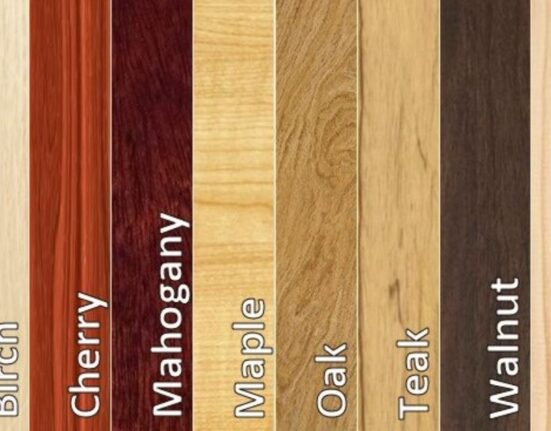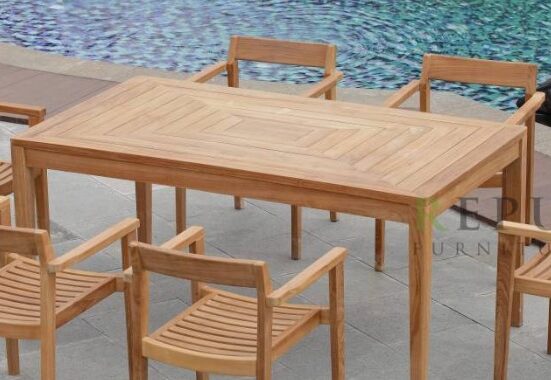teak outdoor furniture – Does wetting wood make it stronger? No, wetting wood reduces its strength and stiffness. Therefore, woodworkers need to dry timber before constructing it into furniture and other fixtures. Using stronger wood for constructing flooring, furniture, or other fixtures offers more advantages. Stronger wood fixtures are more durable and safer compared to weak wood fixtures. However, making wood stronger is not an easy task. Does wetting wood make it stronger?
Moisture has several impacts on wood. However, some of these impacts may be harmful to the wood. Please keep reading to check how moisture or water affects wood.
Teak furniture is stronger wood than other wood
Understanding Moisture Content in Wood and Its Drying Process
Freshly cut wood is high in moisture content. The mass of water in this wood ranges from 60% to 200% of the tree’s dry mass. Due to this high moisture content, woodworkers will dry the freshly cut timber to reduce the water mass.
There are two methods of drying timber, i.e., air drying and kiln drying. However, most woodworkers choose the latter to dry wood because it is more effective and efficient than the former.
Woodworkers will dry the timber until it reaches an ideal level of dryness. Ideal timber for woodworking must have 6% to 8% of moisture. Drying will cause the timber to shrink. In some cases, the shrinkage damages the wood because the drying process occurs too rapidly.
Woodworkers dry the freshly cut timber for several reasons. Below are some of them.
- The value of dry wood is higher than that of freshly cut wood.
- Drying timber can prevent the timber from decaying and getting fungal damage or insect defects.
- Dry timber is lighter and stronger than freshly cut wood.
Does Wetting Wood Make It Stronger?
Based on the information above, dry wood is stronger than wet wood. Therefore, wetting wood will not make it stronger. What happens when wood absorbs water? Absorbing water will increase the moisture content in wood.
Increased moisture levels will cause the wood cells full of water and expand. High moisture will also soften the wood fiber. As a result, the wood will have lower levels of stiffness and strength.
These conditions make wood easier to shape. However, wood furniture and fixtures with higher moisture levels may shrink, which leads to cupping and gaps, in a dry environment. Consequently, they are not attractive and may become a safety hazard.
Other Effects of High Moisture in Wood
High moisture content does not only weaken wood, but it also causes other effects. One of them is fungal damage. Fungi prefer a wet habitat to live in. Therefore, wet wood is prone to fungal damage.
Wood with fungal damage has a duller color than the color of its species. In addition, it is usually weaker because fungi damage the wood cells. You can check this damage by crushing the wood. If the crushed part turns into powder, it means fungi have caused the wood to rot.
The second side effect of high moisture levels in wood is difficulty in staining or varnishing the wood properly. Wetting wood before staining or varnishing may cause the wood to absorb less stain or varnish. Consequently, it will not get proper protection from the stain or varnish.
Does wetting wood make it stronger? No, wet wood is weak and prone to fungal damage. Therefore, Republic Furniture only makes furniture products from wood with 6% to 8% moisture to ensure their durability and strength. You can buy these products by visiting https://republicfurnitures.com/blog/contact-us.





Leave feedback about this